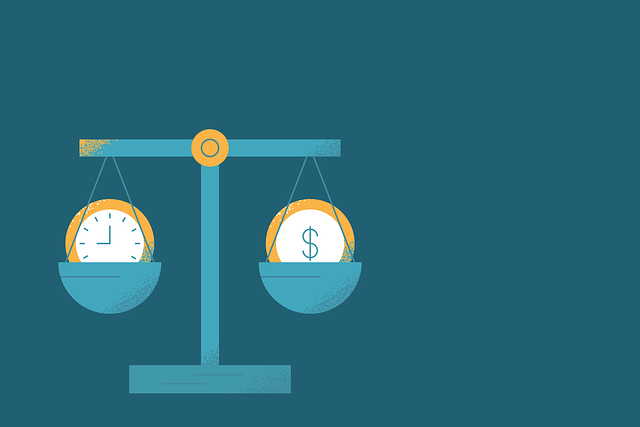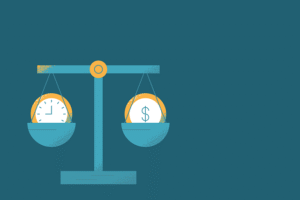As Tether (USDT) has become one of the more popular stablecoins in the cryptocurrency domain, it has raised questions about its significance in the crypto world. USDT, in a way, behaves like a stable currency, but at the same time, has characteristics of a cryptocurrency too. Which of the two forms of currency does it resemble more, Bitcoin, which sought a neutral ground to US currencies, or the U.S. dollar?
The comparison of Tether, Bitcoin, and fiat currencies shows Tether’s functionality and explains Tether’s appeal to a wide range of users. Interestingly, while Tether has characteristics of both forms of currencies, with the help of stablecoins, it tries to maintain a balance of both.
Table of Contents
ToggleUnderstanding Tether
It is important to note that Tether, or USDT, is a stablecoin that maintains value by being pegged to a physical currency. Its goal is therefore to maintain a one-to-one value range with the dollar. Tether Ltd., the organization that manages Tether, has issued a statement claiming that the token is backed by a mix of assets, including cash, crypto, and other short-term assets.
This support aims to shield Tether from the common volatility that many cryptocurrencies face, such as experiencing sudden price changes. Tether’s objective is to allow users to have the benefits of cryptocurrency with fast, borderless transfers while maintaining the stability of a fiat currency. This allows traders, investors, and users to shift funds quickly between accounts without the risk of being impacted by price changes.
One sector where Tether’s features have proven especially beneficial is online gambling. Casinos that accept Tether allow players to deposit and withdraw funds with transaction speeds faster than traditional fiat methods, while avoiding the risk of value changes during the betting process. Players can wager amounts tied to the U.S. dollar, providing predictability and peace of mind. This advantage is often highlighted in Tether casino reviews, which explain how stable value and fast settlements enhance the gaming experience.
The Comparison of Tether to Bitcoin
As the first cryptocurrency to ever exist, Bitcoin is created, owned, and operated by a decentralized entity. The entirety of the Bitcoin network is made up of different nodes that have no central authority controlling them. Bitcoin is very limited in supply. The total number of Bitcoins to ever exist is 21 million, which makes having a Bitcoin a very scarce and valuable asset. Bitcoin, however, is very volatile in its pricing. The pricing is dictated by the general economic climate of the market, the demand and supply, and even the speculation made by the investors.
The opposite is true for Tether. Tether is intended to maintain a stable price of $1. Tether’s price stability is ensured through its central administration, which manages the issuance and redemption of its tokens. Tether Ltd. issues tokens as demand and maintains reserves that back the circulating supply, which are claimed to equal the amount of tokens Tether Ltd. may be required to redeem. This gives Tether Ltd. the right to fully control the Tether supply. This is the complete opposite of Bitcoin’s decentralized issuance.
When Bitcoin is compared to assets, it is often regarded as digital gold. This means people often invest in BTC, hoping its value will increase over time. Rather than holding value, Tether is used as a means of exchange. In the cryptocurrency environment, traders use Tether to quickly switch in and out of other cryptocurrencies without needing to change back to fiat currency.
For Tether, its focuses are price stability and usability. This contrasts sharply with Bitcoin, which focuses on decentralization and scarcity. This key difference dictates how each asset is utilized by users.
How Tether Compares to Fiat Currency
Tether is therefore very similar to fiat currencies. Both are centralized, require trust in some governing body, and have a stable price. However, Tether’s blockchain technology gives it advantages that traditional fiat does not have. Transactions with Tether are borderless and bankless, allowing real-time processing without the need for traditional payment processors. This significantly decreases the costs and time associated with the transaction.
For example, traditional fiat payments, especially international ones, are notorious for taking several days. In contrast, Tether’s blockchain technology enables near-instantaneous transactions with significantly fewer barriers and restrictions.
Blockchain Technology and Usability
Tether is also issued on multiple blockchain networks, including Ethereum, Tron, and Solana. This multi-chain approach allows Tether to be used widely across decentralized finance (DeFi) applications, exchanges, and digital platforms.
Since it operates on blockchains, Tether benefits from the transparency, security, and programmability these networks provide. Users can send Tether peer-to-peer without needing banks or payment processors, and transactions settle quickly.
Fiat currencies, in contrast, rely on traditional banking infrastructure, which often lacks the speed and global reach of blockchain networks. This makes Tether particularly useful in cross-border payments, remittances, and online activities that require fast settlement.
Businesses have therefore embraced Tether because of these benefits. They benefit from faster funding and withdrawals, with less friction than traditional payment methods. Stablecoins also reduce the risk of currency conversion fees or delays. This ease of use and predictability make Tether a practical option for many platforms.
Use Cases
Tether has a fascinating blend of attributes within the scope of finance. Although Tether uses blockchain technology like Bitcoin and other cryptocurrencies do, it is centralized and structured much like a fiat currency, aimed at preserving value.
Tether and Bitcoin differ in their use cases. Bitcoin is mostly used as a means of value storage. Tether, on the other hand, aims to provide fast, low-cost, and efficient payments. Tether is preferred by many users as it offers a consistent dollar value complemented by the advantages of blockchain technology.
Tether provides a dependable method of transaction without exposure to crypto volatility, making it ideal in many business transactions. Tether’s continued success as a currency relies on its ability to earn and keep trust while maintaining its borderless transactional appeal between the old and new digital economies.










